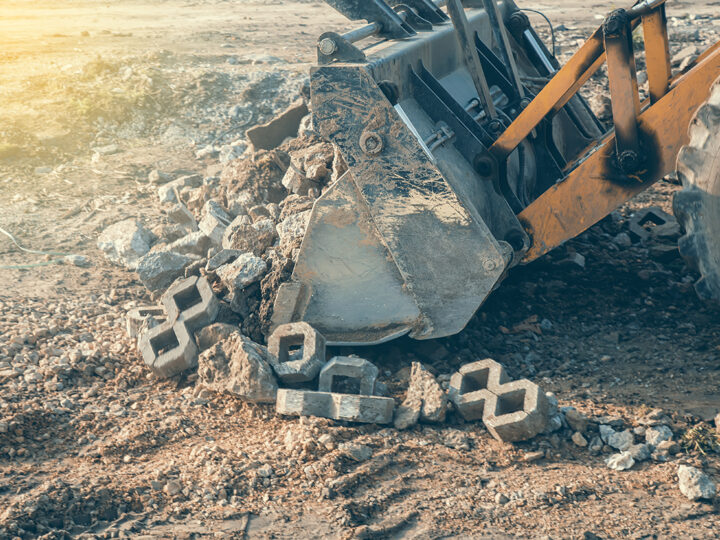
The Use of Statutes of Repose in Setting Record Retention and Insurance Maintenance Policies – A Difficult, but Necessary, Endeavor
Sarah A. Johnson, Esq.
While engineers often use the terms “statute of limitations” and “statute of repose” interchangeably, the distinction between the two terms is of pivotal importance in understanding not only how long documents should be retained, but also in determining how long an engineer should retain insurance coverage and/or how far back the insured engineer’s retroactive date needs to be to ensure that it is covered for all potential claims.
Statutes of limitations bar a lawsuit that is not brought within a certain time period, but the time period allowed may be subject to change based on the date in which the claimant discovers its injury and that the injury was wrongfully caused.1 In other words, in certain scenarios, the statute of limitations will not be deemed to begin running until the claimant discovers or should have discovered that its injury was wrongfully caused, which can occur years after the engineer completes its services.2 Due to this rule, which is commonly referred to as the discovery rule, statutes of limitations often do not set an outer limit on when a claim may be asserted or litigation may be filed.
On the other hand, statutes of repose typically set a time limit for filing a suit that runs from a set point in time. While statutes of repose vary from state-to-state, they typically start running from the time of substantial completion of construction or improvement to real property, occupancy or possession of the improvement, or the date of the act, error, or omission.3 Thus, the applicable statute of repose starts running from an identifiable event and sets the outer limit for bringing a lawsuit. As such, engineers should look to the statute of repose, not the statute of limitations, to set the time period for their record retention and to determine how long to retain insurance and how far back their retroactive date should go.
However, knowing the language of or the number of years for the applicable statute of repose in the engineer’s jurisdiction is often not sufficient to understand how long the engineer will remain potentially liable for its past acts, errors, or omission. This is because the application of statutes of repose can be complex and even inconsistent in certain jurisdictions.
Some of the statutes are difficult to follow based on the language utilized and the exceptions incorporated. For example, the statute of repose in Colorado states that an action against an architect, contractor, builder or builder vendor, engineer, or inspector performing or furnishing the design, planning, supervision, inspection, construction, or observation of construction of any improvement to real property shall not be brought more than six years after substantial completion of the improvement except for a cause of action arising during the fifth or sixth year after substantial completion in which case the action must be brought within two years after it arises.4 Accordingly, in Colorado, a claimant may have up to eight years from substantial completion to file its suit depending on when the claimant discovers its injury.
Even if the language of the applicable statute of repose is fairly straightforward, a court may interpret the language in a different way than might be anticipated. As noted above, many statutes of repose begin to run from the date of “substantial completion” of an “improvement.” However, courts have interpreted these terms in different and often unexpected ways. In Indus. Risk Insurers v. Rust. Engineering Co., the Court of Appeal of California held that in order to reconcile the language in California’s statute of repose for construction claims, the statute must begin to run from the date the engineer’s work was substantially completed rather than when the improvement itself was substantially completed despite language indicating that the statute begins to run “10 years after substantial completion of the development or improvement.”5
Lanthrop v. Malcolm Pirnie, Inc. provides an interesting example of a court’s interpretation of the term “improvement.”6 In Lanthrop, the Appellate Court of Connecticut found that there was a material fact issue as to whether monitoring wells installed by an engineering firm for environmental testing services constituted an improvement under the applicable statute of repose.7 Certainly, the defendant engineer did not believe that these wells constituted an improvement as it was simply testing for environmental pollutants and argued that the more general three-year statute of repose for personal injury actions should apply.8 However, the court found that there was an issue of fact as to whether the wells were an improvement given that the results from the testing wells were to be used in determining the need for remediation of and a possible remediation plan for a factory.9
However, by way of contrast, in Scheinblum v. Lauderdale County Bd. Of Supervisors, the United States District Court for the Southern District of Mississippi found that the Mississippi statute of repose for construction claims did not entitle the county board and engineers to dismissal of landowners’ claims for damages in relation to reviewing and approving the subdivision map for a subdivision that flooded because the subdivision map did not constitute an improvement to real property.10
As shown above, the application of statutes of repose can be complex, and the outcomes of arguments based on statutes of repose can be difficult to predict. Thus, best practices dictate that the engineer err on the side of caution in determining how long to retain records and/or coverage and to maintain its retroactive date. The implementation of policies affecting record retention and the maintenance of insurance coverage should be done in consultation with trusted local counsel.
1 E.g., King v. Paul Krez Co., 752 N.E.2d 605, 612-613 (Ill. App. Ct. 2001).
2 Id.
3 Cal. Civ. Code Proc. § 337.15 (Deering 2024) (“ No action may be brought to recover damages from any person […] who […] performs or furnishes the design, specifications, surveying, planning, supervision, testing or observation of construction or construction of an improvement to real property more than 10 years after the substantial completion of the development or improvement […].”); Colo. Rev. Stat. § 13-80-104 (2024) (“all actions against any architect, contractor, builder or builder vendor, engineer, or inspector performing or furnishing the design, planning, supervision, inspection, construction or observation of any improvement to real property shall be brought within the time provided in section 13-80-102 after the claim for relief arises, and not thereafter, but in no case shall an action be brought more than six years after the substantial completion of the improvement to real property except as provided in subsection (2) of this section.”); Fla. Stat. § 95.11 (2024) (“the action must be commenced within 7 years after the date the authority having jurisdiction issues a temporary certificate of occupancy, a certificate of occupancy, or a certificate of completion, or the date of abandonment of construction if not completed, whichever date is earliest.”); N.J. Stat. § 2A:14-1.1 (2024) (“No action […] to recover damages for any deficiency in the design, planning, surveying, supervision or construction of an improvement to real property […] shall be brought against any person performing or furnishing the design, planning, surveying, supervision of construction or construction of such improvement to real property, more than 10 years after the performance or furnishing of such services or construction.”).
4 Colo. Rev. Stat. § 13-80-104(1) and (2).
5 Indus. Risk Insurers v. Rust Eng’g Co., 283 Cal. Rptr. 873, 877-78 (Ct. App. 1991).
6 Lanthrop v. Malcolm Pirnie, Inc., 25 A.3d 740 (Conn. App. Ct. 2011).
7 Id. at 745-46.
8 Id. at 744-45.
9 Id. at 744-46.
10 Scheinblum v. Lauderdale County Bd. Of Supervisors, 350 F. Supp. 2d 743, 746-48 (S.D. Miss. 2004).






